Best Time to Visit Norway
- By Seema
Norway is a land of stunning natural beauty, offering dramatic fjords, jagged peaks, picturesque water bodies, historic towns, and the dazzling Northern Lights. The magic of the beautiful Nordic nation changes with the months, making every visit unique and memorable. Each changing season brings activities, panoramas, and climate conditions that can influence your experience. There are distinct seasons for skiing, hiking, fjord-hopping, and even chasing the aurora borealis.
The best time to visit Norway will depend on your expectations and the activities you wish to pursue. Do you want to explore the midnight sun in summer, or chase the northern lights in winter? Hike through vibrant autumn foliage or watch spring wildflowers bloom? Summertime is ideal for road trips, skiing, and fjords. Spotting the Northern Lights and enjoying snow-related activities are best done in the winter.
The fact is that Norway is a fantastic place to visit any time of the year. You can never go wrong. If you’re unsure about the best time to visit Norway, let’s go through the calendar and you can decide which month is best for you. We’ll start with a general overview and seasonal advice, and then move on to a month-by-month breakdown to help you plan the best time for your trip.
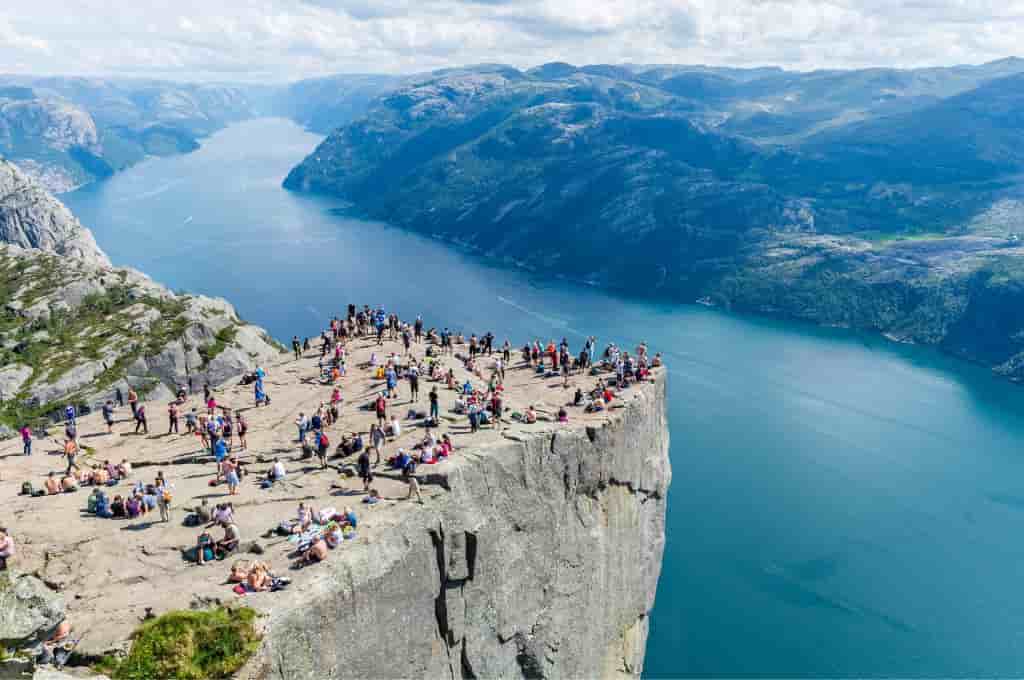
When to Visit Norway – Seasonal Overview
Norway experiences all four seasons: spring, summer, fall, and winter. Read on to find out what season suits you best.
Norway in Winter (December to February)
Best For: Northern Lights, Winter sports, Festive markets
Weather: Freezing with heavy snowfall in northern mountain areas
Best Places to Visit: Oslo, Bergen, Lofoten islands Alesund, Trondheim, Tromsø, Svalbard,
Norway becomes a snowy wonderland during the winter. Ice-fluted mountains, frosted fjords, spectacular landscapes, fewer tourists, winter activities, and the chance to spot some colorful dancing lights in the sky – what more could you want from a winter getaway? Certain roads are closed during the winter, but you can take train journeys all year.
A winter vacation to Norway is highly recommended for witnessing the Northern Lights, particularly in the north, where clear skies and dark nights provide the best conditions for spotting the aurora. If you want to make the most of Norway’s magical winters, head to the Arctic Circle, specifically the Northern Lights Belt, which has the deepest snow and coldest temperatures. The frequency and intensity of auroras are highest here. This region includes the Tromso and Lofoten Islands, which are very popular in winter. Norway is a haven for winter sports enthusiasts, and you can enjoy skiing, husky-sledding, ice fishing, snowmobiling, and snowboarding. The Arctic regions experience polar nights, which means that the sun does not rise at all, making it a one-of-a-kind experience for those visiting Norway in the colder months.
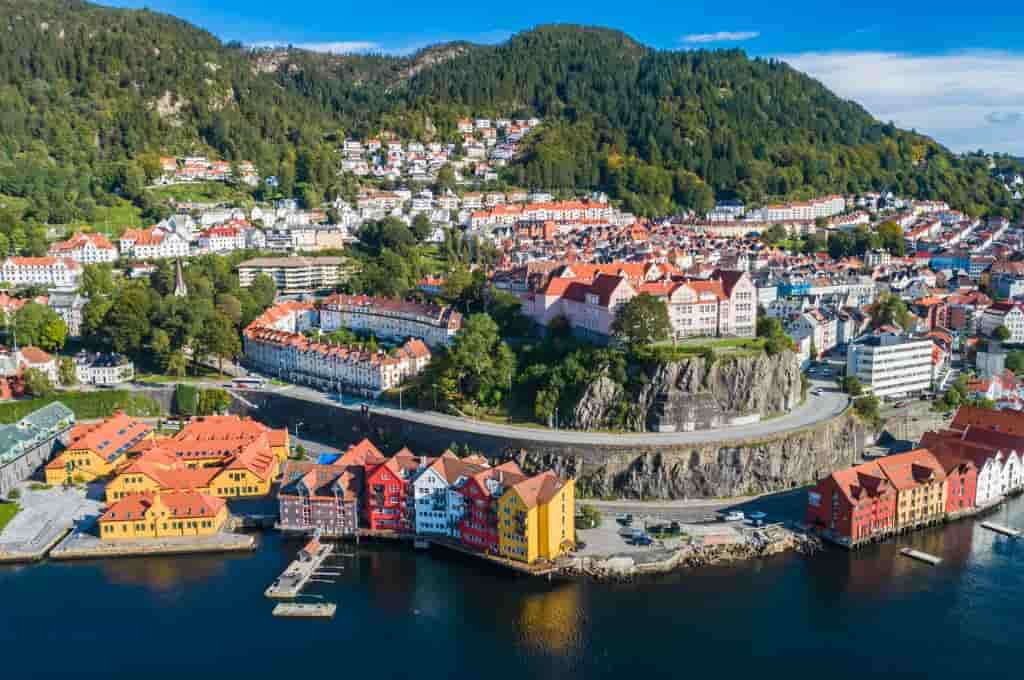
Norway in Spring (March to May)
Best For: Nature awakening, Mild weather, Spring festivals
Weather: With snow still present at higher elevations, it’s still chilly but beginning to warm up.
Best Places to Visit: Oslo, Bergen, Trondheim, Voss, Ålesund, Flam, Stavanger
Spring is a fantastic season to visit if you enjoy milder temperatures and nature’s awakening. The rivers, lakes, and waterfalls swell with fresh water and life as the winter snow melts. Norway’s countryside stirs up, with wildflowers blooming and wildlife emerging from its winter hibernation. Wildflowers are in full bloom all over the country, and carpets of flowers add color to the Norwegian landscape. Early spring is still good for skiing, particularly in northern areas, but lower elevations begin to thaw, providing a picturesque backdrop for hiking, cruising, and other outdoor activities. However, some hiking trails may still be covered in snow until late spring. The national holiday celebrations on Constitution Day (May 17) offer a festive and cultural experience, complete with parades and traditional attire.
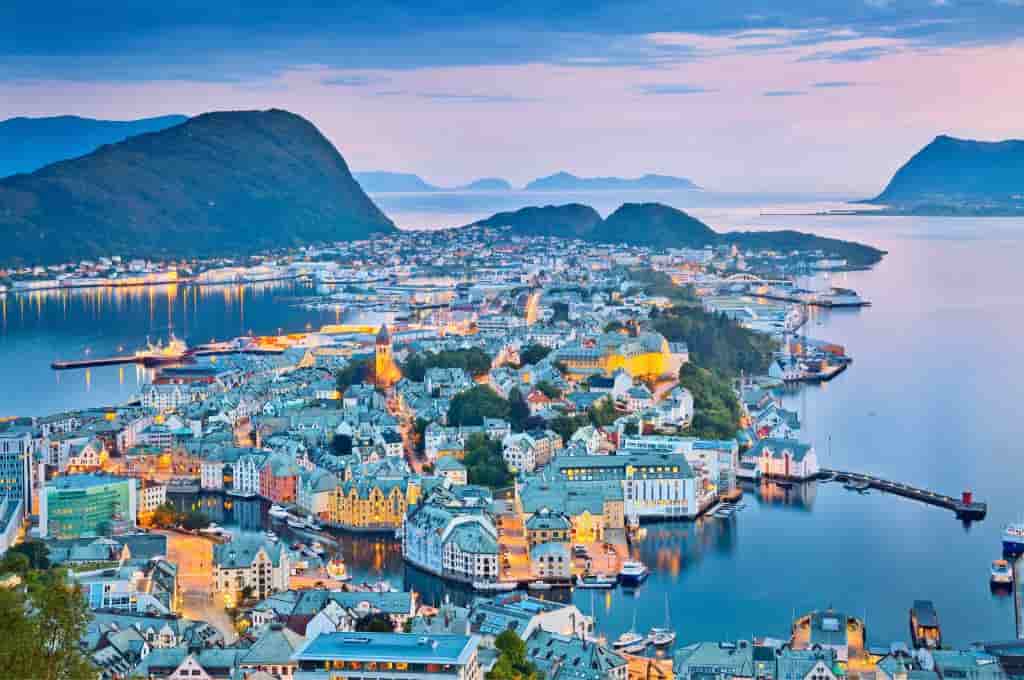
Norway in Summer (June to August)
Best For: Outdoor activities, Fjord cruises, Midnight Sun, Road trips, Hiking, Island hopping, snorkeling
Weather: Warm, long days
Best places to visit: Oslo, Alesund, Bergen, Tromsø, the Lofoten Islands, Svalbard, and Flam.
If you want to take advantage of the warm weather, long daylight hours, and good road conditions, visit Norway between June and August. Summer in Norway is marked by the Midnight Sun phenomenon, in which the sun never fully sets, resulting in short nights and long days. The Arctic Circle has 24 hours of daylight, allowing you to partake in outdoor pursuits around the clock. Don’t miss a panoramic road trip on the Trollstigen Road near Alesund. Fjord cruises on the Hardangerfjord, Naerøyfjord, and Geirangerfjord are the most popular this season.
Popular trails, such as Trolltunga and Pulpit Rock, are most accessible this time of year. You can explore the dramatic coastline, hike to Pulpit Rock, spot wildlife, and participate in activities such as kayaking and hiking. If you’re in northern Norway during these months, try to attend a Sami cultural celebration showing local literature, music, handicrafts, and films. June through August have the highest frequency of train, bus, and airplane connections, making it simple to plan and travel. It is also the busiest and most popular time of year to visit, so make sure to book well in advance.
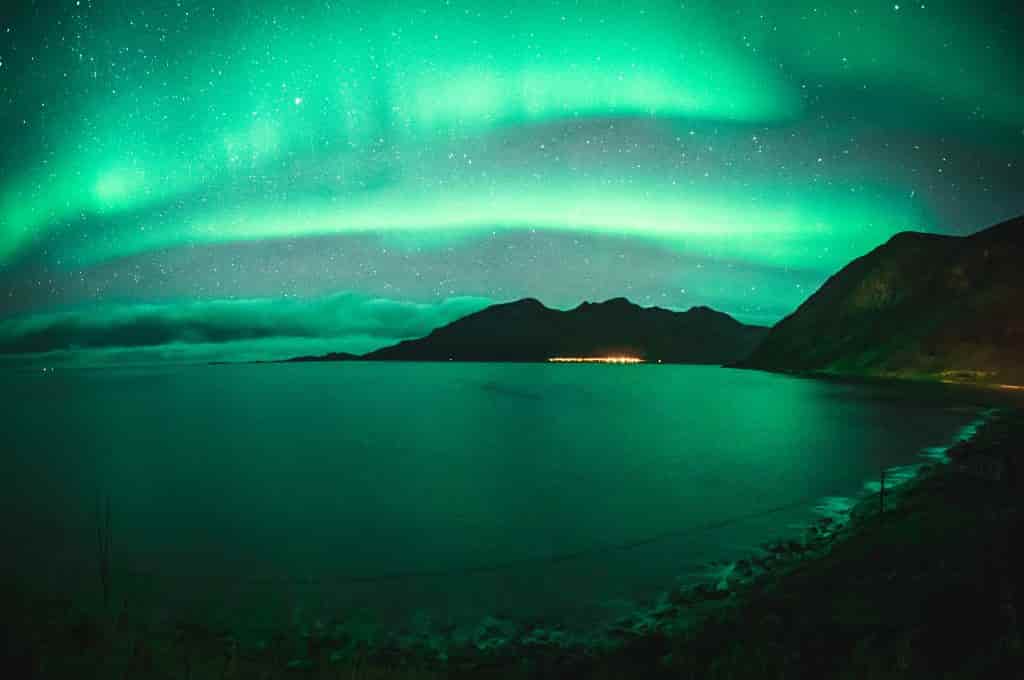
Norway in Autumn (September to November)
Best For: Fall foliage, Northern Lights, Hiking, Fjords
Weather: Cold and unpredictable, with the occasional rain
Best Places to Visit: Oslo, Bergen, Kirkenes, Lillehammer, Bergen, Flam, Alesund, Geiranger, Trondheim, Tromsø, Lofoten islands.
The autumn months are the best time to visit Norway if you want to avoid the crowds, save money, and still enjoy the country’s breathtaking beauty. Between September and November, Norway transformed into a palette of red, orange, and gold. The lush greens of summer are replaced by glorious autumnal hues, which look incredible when scattered across already picturesque landscapes. You may be lucky enough to spot some early Northern Lights, which will provide excellent photo opportunities.
If you’re looking for a great wildlife experience, head north. Autumn is a wonderful time to go whale watching in the chilly northern waters. Hours of operation and activities are mostly the same as in the summer, and you would have the attraction all to yourself. As the number of tourists decreases, so does the frequency of transportation, but this is something that can be managed with careful planning. The weather cools, but snowfall remains unlikely. Coastal regions stay warmer than the rest of the country. Be ready with your waterproof gear for occasional rain during the rainy season.
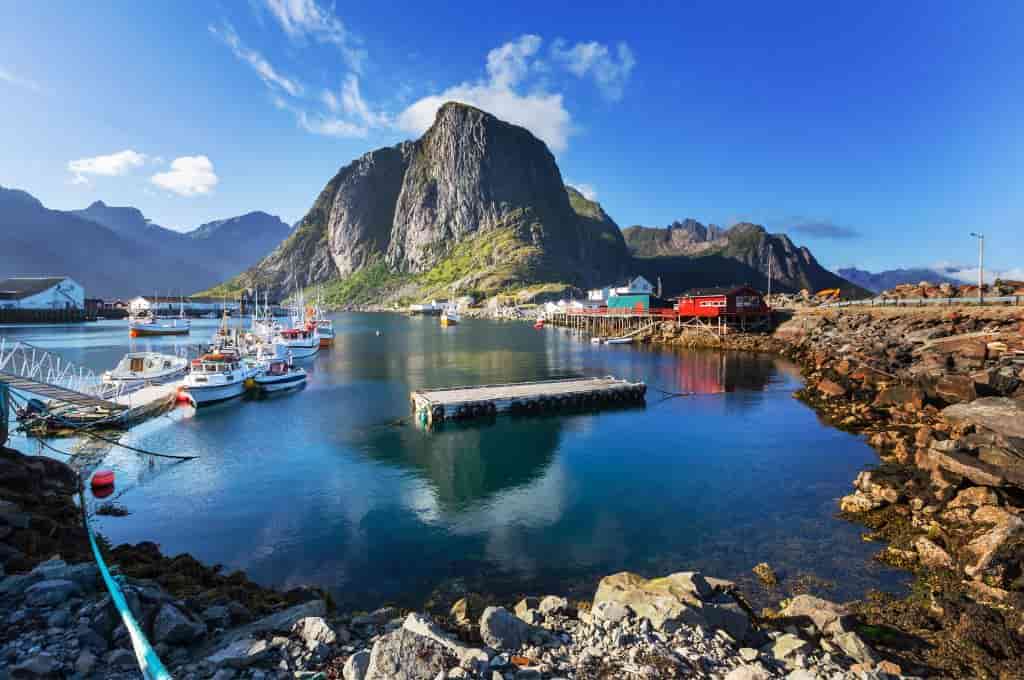
When to Visit Norway – Month-to-Month Overview
January in Norway
Weather: Harsh and cold winters with heavy snowfall in northern regions. (-7 to 2°C)
Daylight: 6 to 8 hours in Oslo. Sun does not rise in Tromsø in January.
Highlights:
- Northern Lights: The long, dark nights in January are great for chasing the elusive Lights, particularly in Tromsø and Lofoten.
- Winter sports: Ski resorts all over Norway offer excellent snow conditions for cross-country skiing, snowboarding, dog sledding, and snowshoeing.
- Polar Nights: The sun does not rise for weeks in the Arctic, offering a rare winter experience
February in Norway
Weather: Temperatures remain freezing (-6 to 3°C )
Daylight: 6-9 hours
Highlights:
- Winter sports: February is one of the top months to go skiing and snowboarding in national parks like Rondane and Jotunheimen.
- Northern Lights: The aurora continues illuminating the northern Norwegian skies, which often appear bright and clear.
- Sami Culture: Sami Week is celebrated in the Finnmark region. It celebrates the culture and history of the Indigenous people of Northern Scandinavia.
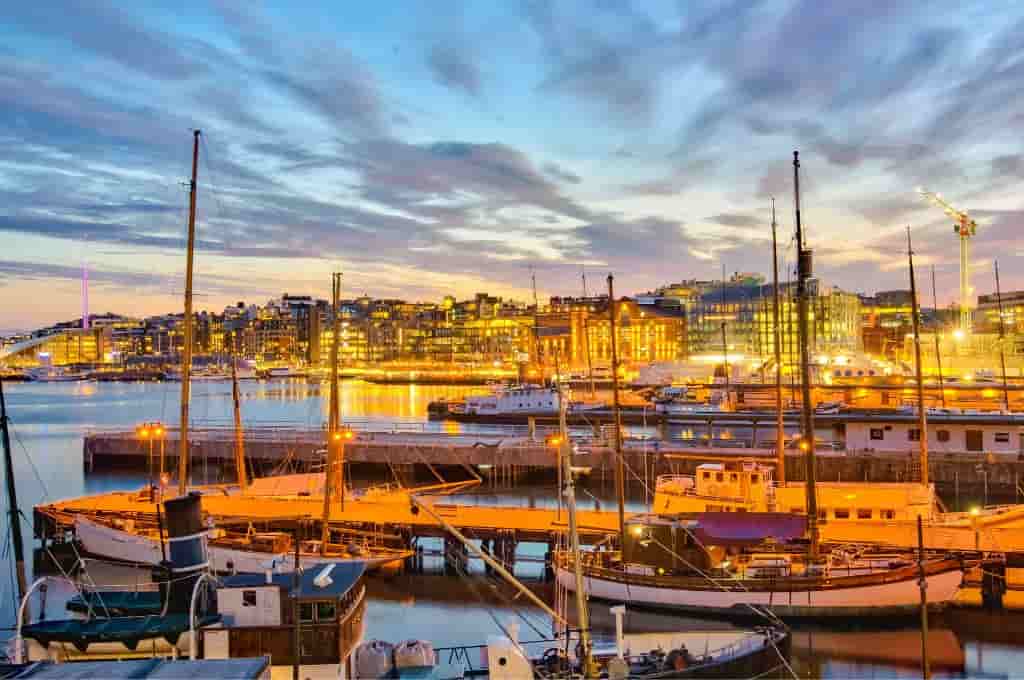
March in Norway
Weather: There’s still snow in the north, but it starts getting warmer (-3 to 7°C )
Daylight: 8 to 13 hours
Highlights:
- Spring skiing: Even with more daylight and milder temperatures, many ski resorts still have excellent snow.
- Northern Lights: The Northern Lights Season ends in March, but some excellent sightings of the elusive lights remain. Despite the longer days, the aurora remains visible.
- Fjords begin to thaw: The melting snow causes water bodies to swell with fresh water, resulting in abundant and impressive waterfalls.
April in Norway
Weather: Cool as snow melts and green landscapes emerge (1 to 10°C)
Daylight: 9 to 16 hours
Highlights:
- Early hikes: As the snow melts, some lowland hiking trails become accessible. This is a great time to explore the rugged countryside before the peak season crowds arrive.
- Quieter travel: Airfare and hotel rates remain low as the tourist influx kicks off. With fewer visitors, you won’t have to deal with crowds of holidaymakers everywhere you go.
- Wildlife: Spring is an excellent time to observe migrating birds and other wildlife waking up from winter.
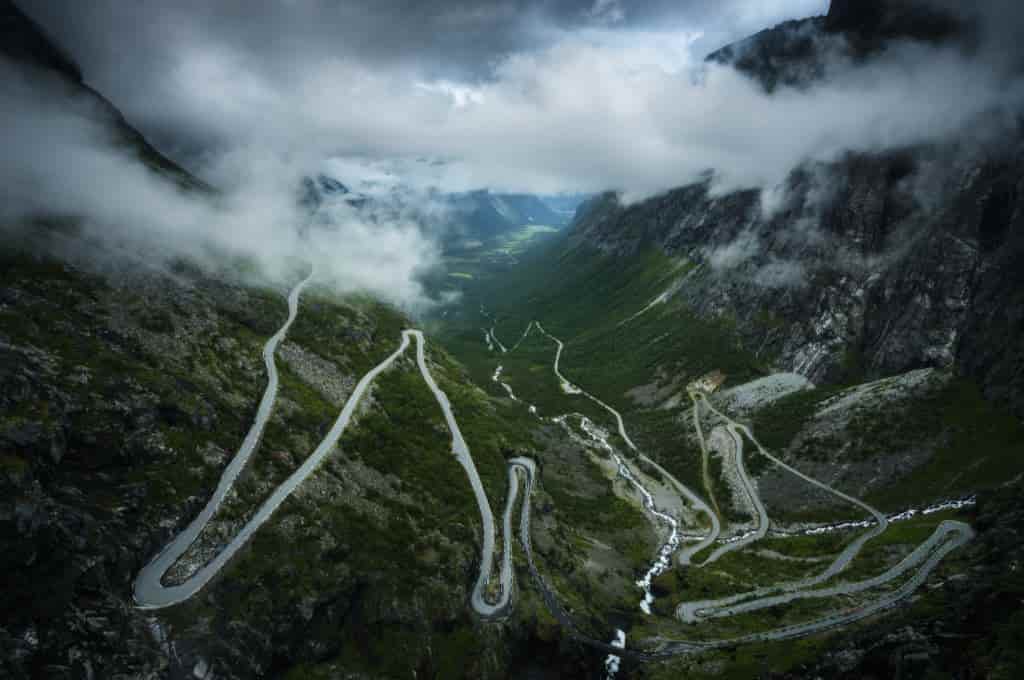
May in Norway
Weather: Mild with lush greenery and blooming flowers (7 to 16°C )
Daylight: 15-16 hours in Oslo, the sun rarely sets in the Arctic Circle
Highlights:
- Constitution Day (May 17): One of Norway’s primary national holidays, celebrated with traditional costumes, parades, and festivities.
- Beautiful Waterfalls: The melting snow from Norway’s mountains creates spectacular waterfalls.
- Outdoor activities: The weather is dry and sunny, the landscapes have grown lush and green, and the summer crowds have not arrived yet. It is a great time for outdoor activities like hiking, cycling, and kayaking.
June in Norway
Weather: Mild to warm with long days and short nights (11 to 20°C )
Daylight: 16-17 hours in Oslo, nearly 24 hrs of sunlight in the Arctic Circle
Highlights:
- Midnight Sun: Above the Arctic Circle, the sun remains visible throughout the day and night. This is the time to visit Norway to experience the country’s legendary midnight sun.
- Fjord cruises: June ushers in the summer cruising season, complete with warm weather and amazing panoramas of Norway’s fjords.
- Road Trips: The extended daylight hours and good road conditions make it an ideal time for a long road trip.
- Festivals: Music, food, and cultural festivals begin to pop up all over the country.
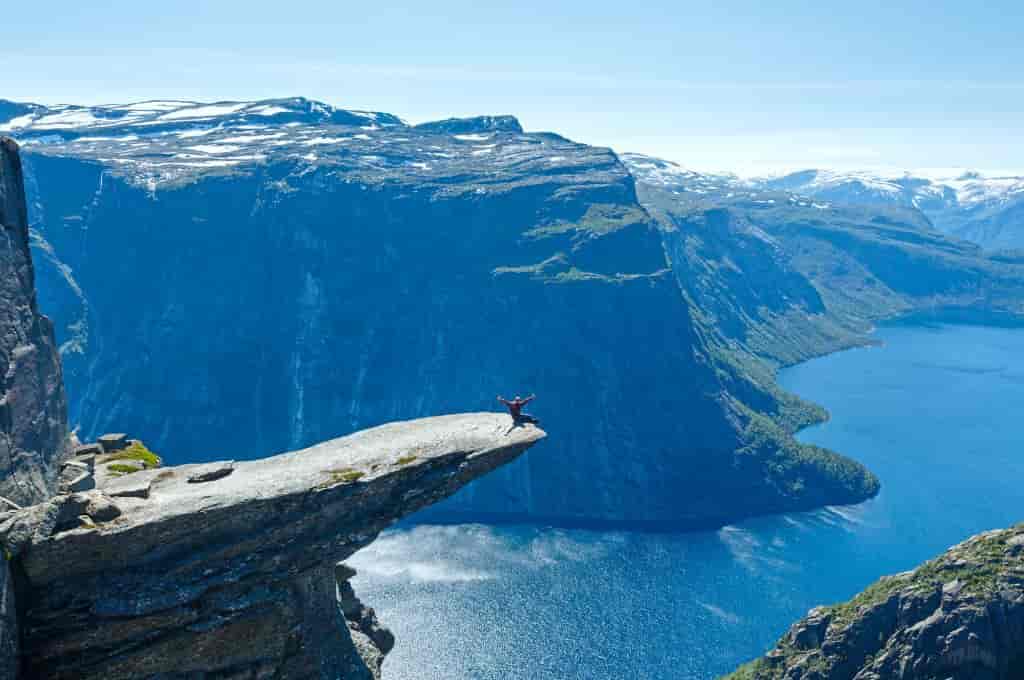
July in Norway
Weather: Warm with long days and peak tourism (13 to 24°C ),
Daylight: 16-19 hours in Oslo, nearly 24 hrs of daylight in the Arctic Circle
Highlights:
- Outdoor adventures: These are the best times for biking, kayaking, and hiking. The famous Trolltunga, Preikestolen, and Kjerag hikes are all easily accessible.
- Fjord exploration: July is a terrific month for scenic fjord cruises and road trips.
- Everything is Expensive: July is the busiest month in Norway. The holiday season and favorable weather result in higher airfare and hotel rates. Booking is recommended because travel within the country can sell out.
- Festivals: Local festivals, such as the Riddu Riđđu, showcase Sami culture in northern Norway.
August in Norway
Weather: Warm with long days and fewer crowds than in July (12 to 20°C )
Daylight: 16-18 hours in Oslo, nearly 24 hrs of daylight in the Arctic Circle
Highlights:
- Fjord adventures: Waterways are still great for kayaking, cruising, and swimming
- Hiking: Although there are fewer people than in July, mountain and fjord trails are still open and accessible.
- Northern Lights: Towards the end of the month, the nights start to get darker, providing early opportunities to see the aurora.
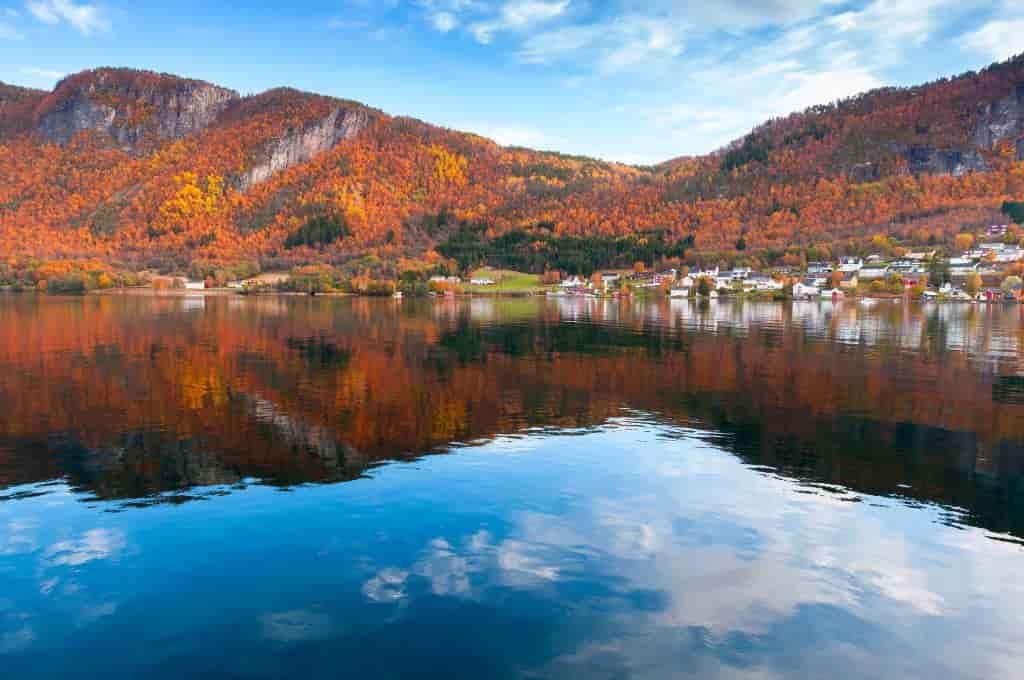
September in Norway
Weather: Temperatures drop and foliage turns gold (7 to 16°C )
Daylight: 11 to 14 hours
Highlights:
- Autumn foliage: The forests transform into stunning shades of orange, red, and gold, just perfect for picturesque drives and snapping pictures.
- Fewer tourists: Travel will be more peaceful now that the summer rush has come and gone.
- Northern Lights: The reemergence of longer nights makes September a fantastic month to see the Northern Lights.
October in Norway
Weather: Cool to cold, with fiery autumn colors and shorter days (4 to 10°C),
Daylight: 11 to 12 hours
Highlights:
- Fall scenery: As the country progresses into autumn, landscapes get soaked in autumn colors, making it a perfect opportunity for nature photography.
- Northern Lights: October is one of the greatest months to see the aurora since darkness returns.
- Quieter tourism: With fewer visitors and lower prices, now is a good opportunity to explore major attractions without crowds.
- City Trips: The best time to go sightseeing in places like Oslo, Bergen, and Tromsø is in October.
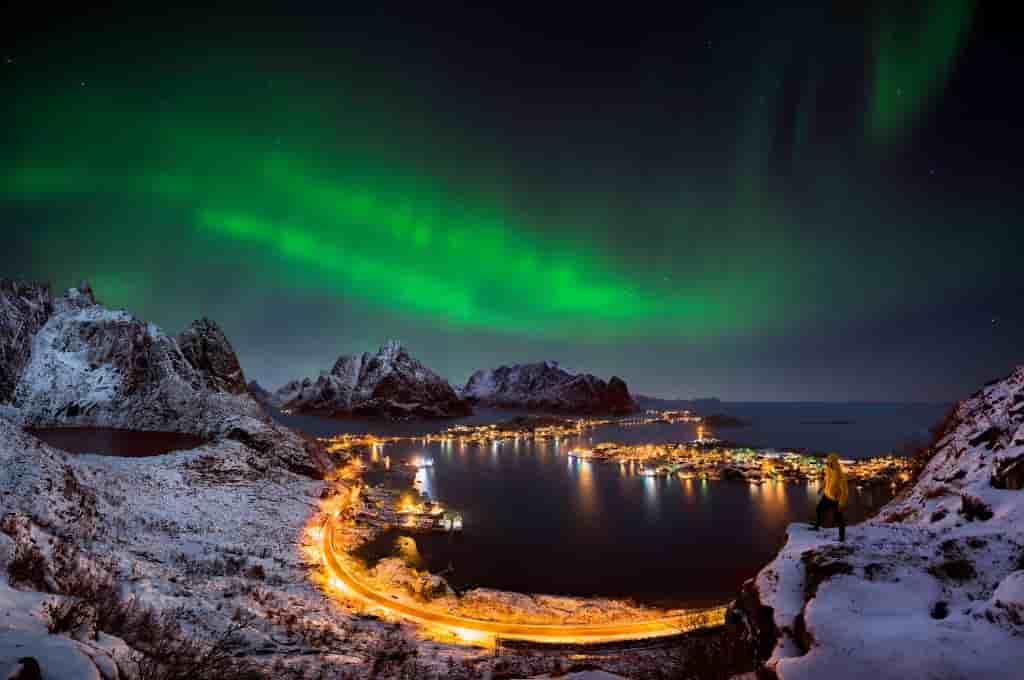
November in Norway
Weather: Cold and wet, with early snowfall in some areas (-1 to 4°C)
Daylight: 6 to 8 hours in Oslo. Sun barely rises in the Arctic Region
Highlights:
- Northern Lights: With long, dark nights, November is another great month to chase the aurora. For the majority of Northern Norway, it marks the official start of the Northern Lights season.
- Snowfall begins: Northern regions and higher elevations begin seeing substantial snowfall, preparing for winter sports.
- Christmas preparations: In cities like Oslo and Bergen, Christmas markets and festive lights begin to appear in late November.
- Whale Watching: It is the season for whale watching. Orcas, fin whales, and humpback whales hunt in the fjords near Tromsø.
December in Norway
Weather: It’s cold outside, with thick snow covering much of the country (-5 to 0°C),
Daylight: 6 to 8 hours in Oslo. Sun barely rises in the Arctic Region
Highlights:
- Northern Lights: December is the darkest month of the year, and the clear winter skies make it right for glimpsing the aurora borealis.
- Christmas celebrations: Norway’s cities and towns are lit with holiday lights, festive decorations, Christmas markets, and fun-filled activities.
- Winter sports: Skiing, snowboarding, dog sledding, reindeer safaris, and other winter activities will be fully operational by mid-December.
- Gorgeous Landscapes: December is pretty with snow flurries, frozen lakes, and frosted fjords.
